Avery Singer, Reality Ender
Brilliantly Blurring Layers To Altered States
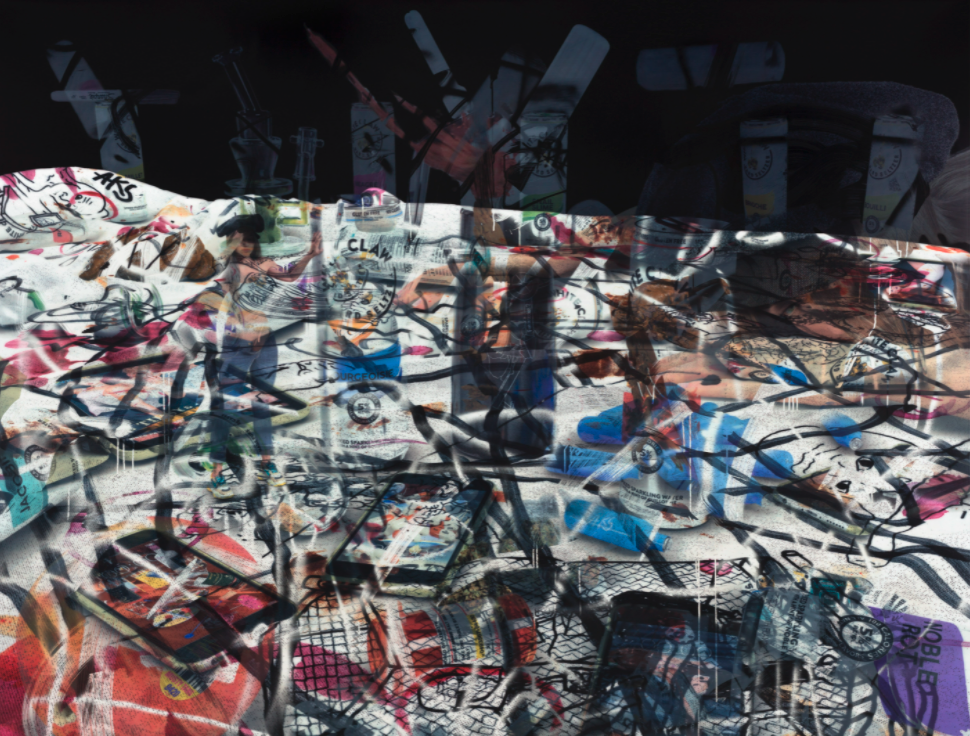
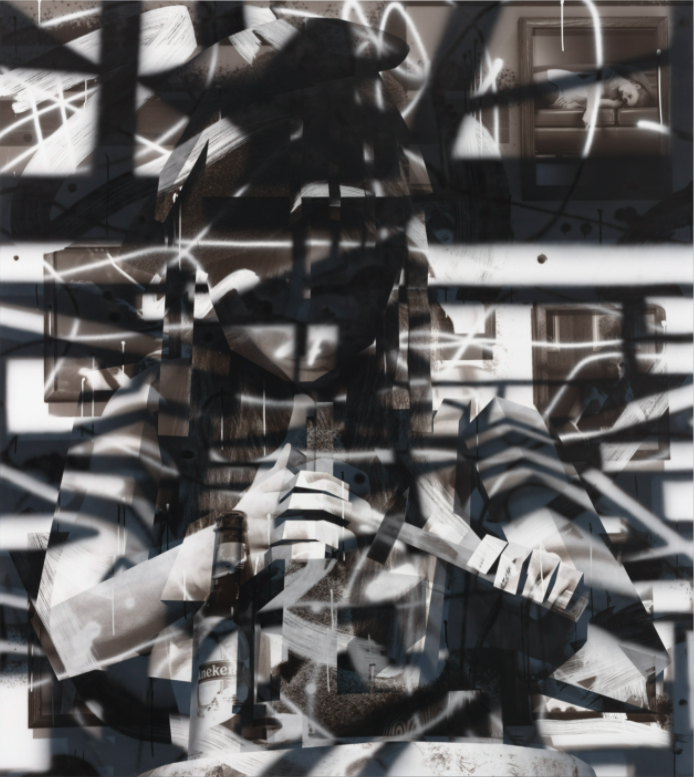
Young emerging artist Avery Singer’s first solo exhibition with Hauser & Wirth opened on September 9 and featured two new large-scale paintings. On 22nd Street in New York City, the gallery has dedicated its second and fifth floors to exhibiting these new works by the groundbreaking American artist.
Avery Singer was born in 1987 in New York City to artists Janet Kusmierski and Greg Singer. Undoubtedly, she was destined to follow in her parents’ footsteps, as she was even named after an artist: modern American painter Milton Avery. She was raised surrounded by art and creativity, and she began experimenting with photography, film, and drawing before she even considered painting. She studied at Städelschule, Frankfurt am Main, in 2008 and received her B.F.A. from Cooper Union, New York, in 2010, where she experimented with performance art and video making and sculpture utilizing carpentry, metal casting, and welding. However, it wasn’t until after graduating that she discovered her signature style. She experimented with SketchUp, a program to design exhibition spaces, where she airbrushed a black and white painting based on a digital illustration. That was the beginning of her practice which employs the binary language of computer programs and industrial materials to remove the trace of the artist’s hand while engaging the tradition of painting and the legacy of Modernism.
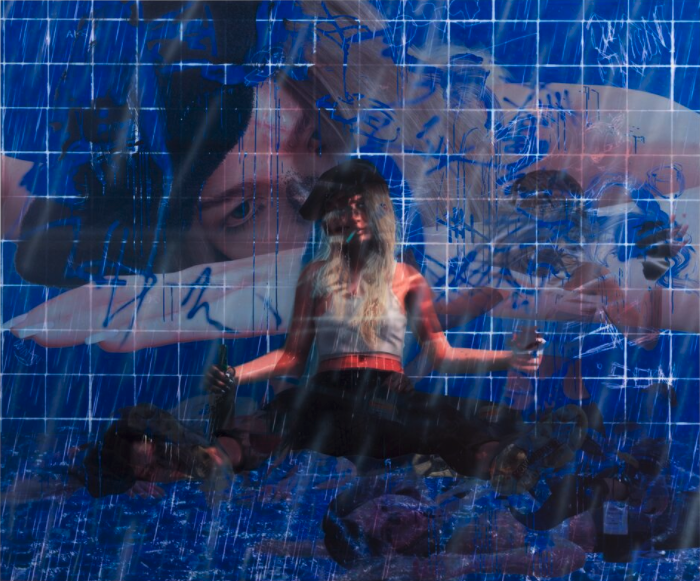
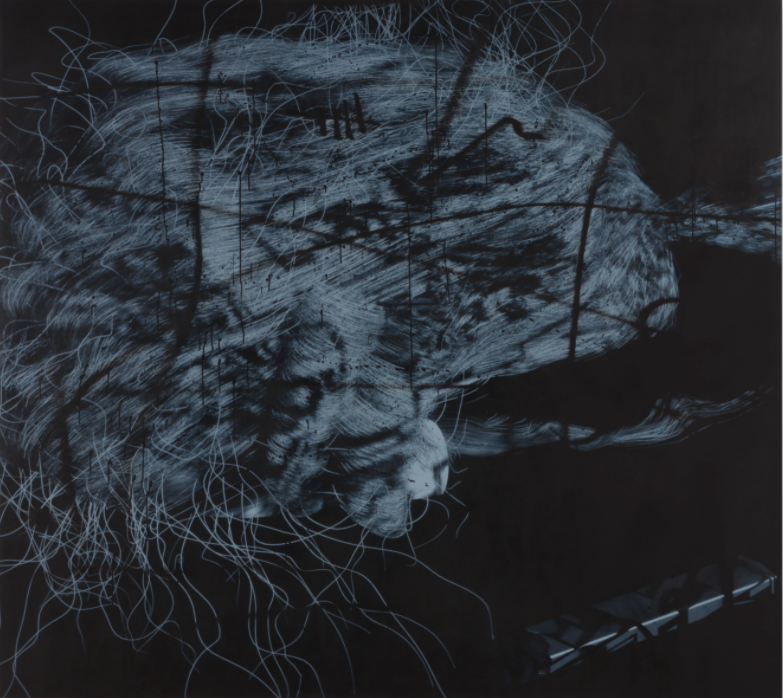
This show, titled Reality Ender, introduces the viewer to a merging of ideas, places, and narratives. As stated by the gallery: “the exhibition invites us to consider form as a state of encounter – an encounter that does not take place with a singular object, reference, or context, but as a conflation of narratives, spaces, histories, and ideas. Singer’s new paintings explore themes – 19th-century European painting motifs, romantic notions of intoxication, stereotypes surrounding the bohemian artist, and icons of contemporary digital culture – that amalgamate past and present, clarity and ambiguity, and propose an escape from our quotidian reality.” In addition, Singer’s new work shows combinations of digital and analog processes through layering: “The artist’s complex process of layering begins with finely primed, gessoed canvas, onto which images are projected before being methodically developed with airbrushed acrylic paint and liquid rubber. The rubber is used as masking solution in a lot of Singer’s paintings, allowing parts of her imagery to be visibly and vigorously removed, effectively unveiling the complex dimensionality that constitutes the numerous layers of each work. Through these diverse methods, Singer continues to challenge the limits of the medium and develop her own way of seeing.”
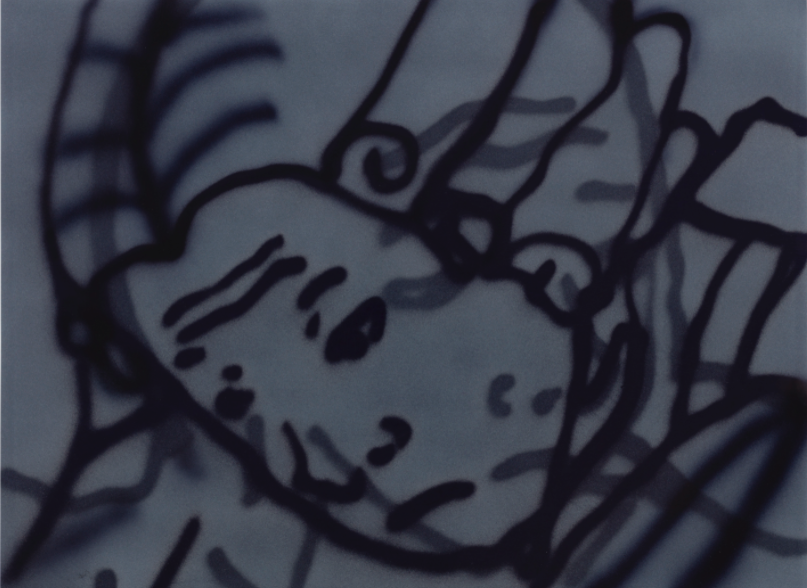
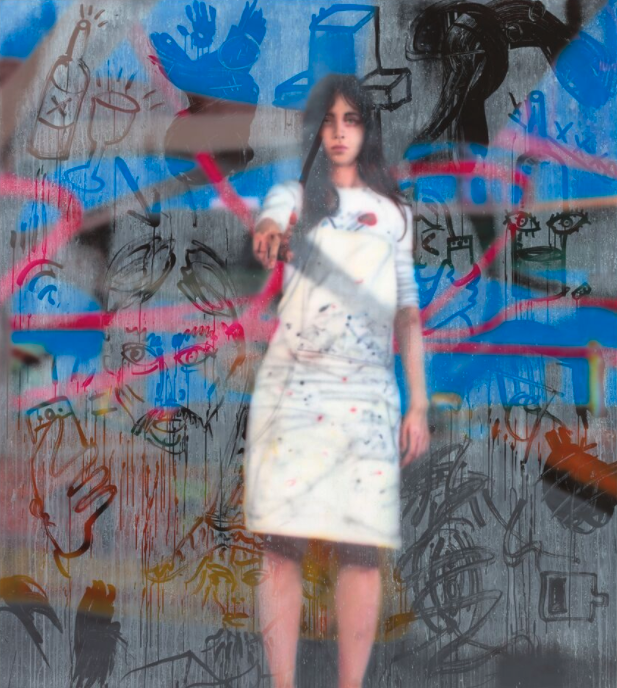
As for the show’s title, Reality Ender, Singer told art historian Isabelle Graw that she aimed for a “kind of ‘banalization’ with this title. It sounds very dramatic – it’s a very ominous title actually. But it also triggers banal associations: from video games, to postmodern neologistic concepts, to altered states of consciousness, etc. These multiple associations, when juxtaposed, end up producing a ‘banalization’ of meaning.” She also mentions that “‘Reality Ender’ also points to something like an alcoholic blackout.” Singer’s work is so brilliant and complex, and one has to see it for oneself to appreciate its uniqueness. Reality Ender runs through October 30, 2021.


